Day 2 :
Keynote Forum
Martin J D’Souza
Mercer University, USA
Keynote: Immuno-strategies for cancer treatment including novel particulate cancer vaccines
Time : 09:05-09:35

Biography:
Martin D’Souza obtained his Ph.D. degree from the University of Pittsburgh, PA, USA. He is a Professor & Director of Graduate Programs in the College of Pharmacy at Mercer University in Atlanta, Georgia. He also serves as the Director of the Clinical Laboratory and Co-Director of the Center for Drug Delivery Research. He is the co-founder of Drug Delivery Therapeutics (DDT), LLC. Dr. D’Souza has graduated over 50 Ph.D. students and has published over 100 manuscripts. He has been the recipient of several research grants from the National Institutes of Health (NIH), the American Diabetes Association, the Georgia Cancer Coalition, Georgia Research Alliance. He serves on several Editorial Boards and is a Journal Reviewer for over 10 Scientific Journals and has several patents issued in the area of Nanotechnology.
Abstract:
This talk will focus on the trials and tribulations of immune-strategies for cancer treatment, with special emphasis on the design and delivery of novel particulate cancer vaccines. Some of the innovative particulate vaccines under study for cancer are vaccines for a) breast, b) melanoma, c) ovarian, d) prostate cancer vaccines. The vaccine particulate formulations resulted in reduced tumor growth when compared to non particulate vaccines. We also report on the effect of adjuvants such as Alum, MF-59 and MPL on enhancing the potency of these vaccine proto-types. Microparticulate vaccine was prepared by entrapping whole cell lysate of tumor-associated antigens (TAAs), in a polymer matrix of albumin and biodegradable polymers using a Buchi mini spray dryer. Animals were exposed to tumor cell and once the tumor was palpable, these animals received the vaccine microparticles as prime and boosters via transdermal route through microneedles. The tumor growth was routinely monitored with the use of a Vernier Caliper or through imaging on a whole body infra-red bio-imager. Mechanistic studies such as natural killer cell activity, CD8+ and CD4+ T-Lymphocyte activity after vaccination were also carried out in order to study the mechanism by which the vaccine works to modulate immune response. For these mechanistic studies, studies, different organs such as draining lymph nodes, bone marrow, and spleen of mice were extracted and single cell suspensions were prepared. Flow cytometric analyses for CD8 and CD4 T-cell assays, NK-cell activity were carried out to assess vaccine efficacy. Based upon the vaccine response data, the tumor retardation was found to be significant after transdermal administration. Vaccination using individualized tumor cells may prove to be an efficient treatment for patients in the future. Novel delivery of microparticulate vaccines such as transdermal delivery using microneedles and laser ablation, nasal delivery, buccal delivery, and oral delivery of vaccines, amongst others, will also be discussed.
Keynote Forum
Ahmed Gaffer Hegazi
National Research Centre, Egypt
Keynote: Cytokines pattern of rats infected with Toxoplasma Gundii and supplemented with Capparis Spinosa honey
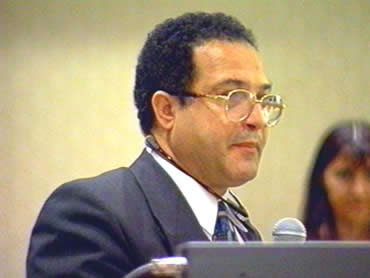
Biography:
Ahmed Hegazi is currently a Professor of Microbiology and Immunology in the National Research Center, Egypt. Prof. Hegazi received his master’s degree in 1979, and his PhD in 1981. Hegazi's research work has been focused lately on bee products and their therapeutic effects. Hegazi organized and contributed to national and international research projects since 1977 and up till now; he has been the principal investigator on multiple research projects within the National Research Center. He has published 211 scientific papers and articles in national and international journals. He also served on the board of multiple national and international scientific journals. Dr. Hegazi is also the president of the Egyptian Environmental Society for Uses and Production of Bee Products, secretary of the Egyptian Society of Apitherapy, secretary general of the African Federation of Apiculture Associations, and a member of the International Apitherapy Commission (APIMONDIA). Dr. Hegazi awards; First Class Decoration of Excellence, Egypt, 1995, The Senior Scientist Prize of National Research Center, Cairo, Egypt, 1996, The National Scientific Prize In Biological Sciences, Egypt, 1990, The Scientific Prize of The National Research Center, Cairo, Egypt, 1989, The Second Best Research Paper Award, International Congress of Propolis, Bones Aires, Argentina, 2000, Main Speaker Award,10th Academic Conference, PRA and NAS (Nippon Apitherapy Soc.) Japan, 2006, 2 Bronze medals from The International Innovation Fair of the Middle East, Kuwait, 2007 Awarded of Ghazi Wad Allah Salon Prize, 2008, Finally awarded the Merit Ward in Medical Sciences, National Research Centre, Egypt, 2016 and have 4 patents.
Abstract:
Objectives: This study was conducted to investigate the cytokines pattern of rats infected with Toxoplasma Gundii and supplemented with Capparis Spinosa honey (Saudi Arabia) for a period of 28 days.
Methods: Immunoglobulin M, immunoglobulin G, and cytokines were detected by using enzyme-linked immunosorbent assays (ELISAs). In addition, the mortality and the morbidity rates were assessed.
Results: Oral administration of Capparis spinosa honey as a natural food additive was experimentally shown to increase the antibody titer; furthermore, compared with the rats in the control group, the levels of the sera cytokines (IFN-γ, IL-1 and IL-6) were consistently higher at day 7 post-infection in the infected rats treated with oral supplements of Capparis spinosa honey.
Conclusion: Orally administered supplements of Capparis spinosa honey increased both the antibody titer and the cytokines (IFN-γ, IL-1 and IL-6) levels in rats infected with Toxoplasma gundii.
Keynote Forum
Mahin Khatami
NCI/NIH (Retired), USA
Keynote: Aging, pathogen-specific vaccines and chronic inflammation: Bases for ‘mild’, ‘moderate’ and ‘severe’ immune disorders including site-specific cancers
Time : 10:05-10:35
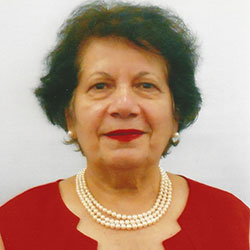
Biography:
Mahin Khatami earned her PhD on Molecular Biology from Univ. PA (1980), after completion of MA (Biochem), MS (Science Education) and BS (Chemistry) from SUNY at Buffalo and Iran. As research faculty at Univ. PA, she was involved in two major projects; molecular/cellular biology of diabetes complications and models of acute and chronic ocular inflammatory diseases. At NCI/NIH, as Program Director (HSA) her earlier studies became accidental discoveries and highly relevant to cancer research and clinical studies. Since 1998, her challenging efforts to promote the role of inflammation in cancer science which initially met with severe oppositions, denial and rejections by NCI managers, seem awakened the entire cancer community in recent years. Numerous funded projects focus on various topics of immunology/inflammation. She has published an NCI-invention on standardizing cancer biomarkers criteria as foundation of database. Her last position before retiring at Professor level was Director, IMAT Program-OTIR/OD/NCI/NIH. She has published extensively in refereed scientific journals, book chapters, conference proceedings and books.
Abstract:
Extensions of accidental discoveries on experimental models of acute and chronic ocular inflammatory diseases that we established at the Univ. PA in 1980’s are presented. Analyses of original data provided a series of first evidence for a direct link between inflammation and developmental phases of immune dysfunction toward tumorigenesis and angiogenesis. The only evidence on initial events for interactions and synergies between activated host and recruiting cells toward tumorigenesis was reported in 2014. Effective immunity was defined as balance between two highly regulated and biologically opposing arms, Yin and Yang of acute inflammation, an amazingly precise signal communications between immune and non-immune systems requiring differential bioenergetics. Unresolved inflammation was defined as common denominator mapping induction of ‘mild’ (increased allergies), ‘moderate’ (hypertension, colitis, gastritis, pancreatitis, emphysema) or ‘severe’ (neurodegenerative, autoimmune diseases or cancer) immune disorders. Little/no other evidence presents systematic early events on immune disruptors-(microbiota, chemicals/carcinogens, pathogen-specific vaccines)- induced developmental phases of immune dysfunction toward tumorigenesis. After a century of cancer research and therapy, failure rates of therapies for solid tumors are 90% (+/-5). Highly powered structure in medical establishment vs. anti-system and chaos in cancer research is potent recipe for failed therapeutics ('medical/scientific ponzi schemes') that kill patients but generate huge corporate profit. American health status ranks last among other developed nations despite the highest amount that USA invests on healthcare. Answer to cancer and improved public health is possible only by switching current culture of 'who you know' to a culture of 'what you know’. Development of universal vaccines to promote immunity and prevent diseases for a healthier society should be among logical approaches for future studies. Policy makers and medical/cancer establishment are urged to return to common sense that our forefathers used to serve the public. Yin-Yang immune ‘Tsunami’ altered immune dynamics toward multistep carcinogenesis Khatami, 2011, 2014.
- Workshop
Location: Piedmont I & II
Session Introduction
Helieh S Oz
UK Medical Center, USA
Title: Chronic immuno-inflammatory diseases and applications for green tea polyphenols
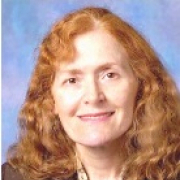
Biography:
Helieh S Oz has DVM and MS (U. IL); PhD (U. MN) and clinical translational research certificate (U. KY Med Center). Dr. Oz is an active member of American Association of Gastroenterology (AGA) and AGA Fellow (AGAF). Dr. Oz is an immune-microbiologist with expertise in inflammatory and infectious diseases, mucosal Immunity, drug discoveries, pathogenesis, and micronutrient. Dr. Oz was PI recipient for NIH-NCCAM grant to investigate Green tea polyphenols and Inflammatory Diseases. Dr. Oz has over 90 publications in the areas of chronic inflammatory disorders (pancreatitis, hepatitis, colitis, periodontitis), microbial and infectious diseases (e.g. Toxoplasmosis, Trypanosomasis, Babesiosis, Pneumocystis pneumonia). Dr. Oz has served as Lead editor for special issues such as Gut Inflammatory, Infectious diseases and Nutrition (Mediators of Inflammation 2017); Nutrients, Infectious and Inflammatory Diseases (Nutrients 2017); Gastrointestinal Inflammation and Repair: Role of Microbiome, Infection, Nutrition (Gastroenterology Research Practice 2016), and co-editor for Parasitic infections in pediatric clinical practice (J Pediatric Infectious Disease 2016) and Chagas Disease, Intech Open Science 2017. Dr. Oz is a member of editorial board for different advisory committees and an avid reviewer for several peer-reviewed journals.
Abstract:
Millions of people worldwide suffer from chronic inflammatory diseases including periodontitis, hepatitis, pancreatitis, gastrointestinal and neurodegenerative complications which can further lead to malignancies. Inflammation and immune response are required for the tissue defense, regeneration and healing process. Yet, exaggerated and chronic inflammation can advance to life-long debilitation, loss of tissue function and organ failure. Despite the millennial advancements in diagnostic technology and therapeutic modalities, there remains no effective cure for patients who suffer from inflammatory diseases. Therefore, over 40% of patients with inflammatory complications seek some form of complementary and alternative medical (CAM) agents as adjunct therapeutic modalities, to alleviate symptoms and possibly to prevent outcomes of inflammation, whether or not to consent their clinicians. There is not sufficient scientific information or international regulatory enforcements regarding the most available CAM agents which some may interact with patients’ current therapies with severe consequences. One of the most investigated agents is Green tea and it polyphenols (GrTP) with potent antioxidants effects. GrTP have important roles in regulating vital signaling pathways comprise transcription nuclear factor-kappa B mediated I kappa B kinase complex pathways, programmed cell death pathways like caspases and B-cell lymphoma-2 and intervention with the surge of inflammatory markers like cytokines (e.g. TNFα, INF, IL-2, IL-6, IL-10) and production of cyclooxygenase. This workshop will explore mechanism of actions for protective effects of GrTP and some reported adverse effects. In addition, possible applications for GrTP will be presented against chronic inflammatory complications and some food safety applications.
- Special Session
Location: Piedmont I & II
Session Introduction
Sami Bahna
Louisiana State University Health Sciences Center, USA
Title: A mouse ate the noble prize
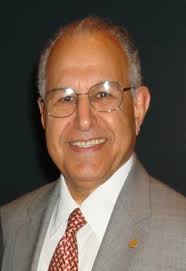
Biography:
Sami L Bahna is a Professor and Chief of Allergy/Immunology at Louisiana State University in Shreveport, and Director of its Allergy/Immunology Training Program. Received MD with Honors at Cairo University, Doctorate in Public Health at Alexandria University, and Research Fellowship at University of Bergen, Norway. Had Pediatric Residency at University of Maryland and Allergy/Immunology Fellowship at Harbor-UCLA Medical Center. Certified by the American Board of Pediatrics and American Board of Allergy/Immunology. Fellow of the ACAAI, AAAAI, EAACI, AAP, Society of Pediatric Research. Published 185 papers and 39 book chapters. Served on the Executive Committee of the AAP Allergy Section, Board of Regents and Executive Committee of American College of Allergy, Asthma & Immunology, and Board of Directors of the Joint Council of Allergy, Asthma & Immunology. Served on editorial boards of several journals. Was President of the American College of Allergy, Asthma & Immunology (2009-2010). Received numerous national and international awards.
Abstract:
In making scientific advances, essential ingredients include scientific perseverance and utmost integrity. Temptation by personal fame can go too far with consequent scientific tragedies – as actually happened to a legendary scientist whom I will talk about. RAG was born to parents in the teaching profession. As a child, he watched his father die from cancer – an event that might have influenced his career choice. He was the first at his university to obtain combined MD and PhD degrees at the age of 25. He received training in pediatrics followed by immunology fellowship, then appointed to the faculty and reached the rank of Professor at the age of 32. His research mostly focused on transplantation immunology. He demonstrated the role of the thymus and described the humoral and cell-mediated arms of immunity. His publications exceeded 2000 and trained >300, most of whom became academic leaders. He received 13 Honorary Doctorate Degrees and multiple lifetime achievement awards. His exceptional contributions earned him the title “Father of Modern Immunology.” He was recruited to direct a world renowned institute for cancer research where he su, pervised the research of a large number of distinguished scientists. Because of dishonesty of a co-researcher, he moved to another institution where he founded research laboratories, built a major clinical immunology service, and initiated a training program. He maintained full-time duties until his death from cancer at the age of 81. RAG’s illustrious career was marred by a scientific fraud committed by one of his faculty members who claimed successful transplantation of skin grafts between two genetically unrelated strains of mice, while in fact he just made incision of a patch in the white mouse skin and painted it black. This unfortunate incident is believed by many to have cost RAG the Nobel Prize in Medicine.
- Innate Molecular Immunology | Cancer & Cellular Immunotherapy | Innate Immunity & Its Evasion Cell Mediated Immunity | Apitherapy and Immune System | Clinical Immunology | Immunopathology
Location: Piedmont I & II
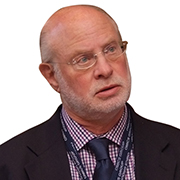
Chair
Charles J Malemud
Case Western Reserve University, USA

Co-Chair
Eduard Rogatsky
Albert Einstein College of Medicine, USA
Session Introduction
Ahmed Hegazi1 and Ahmed F M Al Gethami2
1National Research Centre, Egypt 2Al Guthami Foundation, Saudi Arabia
Title: Immune enhancer of bee propolis

Biography:
Ahmed Hegazi is currently a Professor of Microbiology and Immunology in the National Research Center, Egypt. He received his master’s degree in 1979 and his PhD in 1981. His research work has been focused lately on bee product and their therapeutic effects. He has been the principal investigator on multiple research projects within the National Research Center. He has published 211 scientific papers and articles in national and international journals. He is also the President of the Egyptian Environmental Society for uses and production of bee products, Secretary of the Egyptian Society of Apitherapy, Secretary General of the African Federation of Apiculture Associations, and a Member of the International Apitherapy Commission (APIMONDIA). He got awards; First Class Decoration of Excellence, Egypt, 1995, The Senior Scientist Prize of National Research Center, Cairo, Egypt, 1996, The National Scientific Prize In Biological Sciences, Egypt, 1990, The Scientific Prize of The National Research Center, Cairo, Egypt, 1989, The Second Best Research Paper Award, International Congress of Propolis, Bones Aires, Argentina, 2000, Main Speaker Award, 10th Academic Conference, PRA and NAS (Nippon Apitherapy Soc.) Japan, 2006, two bronze medals from The International Innovation Fair of the Middle East, Kuwait, 2007 Awarded of Ghazi Wad Allah Salon Prize, 2008, Finally awarded the Merit Ward in Medical Sciences, National Research Centre, Egypt, 2016 and has fourpatents.
Abstract:
Propolis had been well documented in traditional medicine for treating systemic immune diseases, allergic diseases, viral diseases and organic-specific inflammatory diseases since more than one thousand years. During the last ten years, immunoregulatory and anti-inflammatory properties of propolis have been published. The therapeutic characteristics of propolis have been well known for a very long time. It has been used in folk medicine for different nations as early in Egypt as 3000 BC. It has recently become a subject of increasing interest for chemists and biologists. It had various biological and therapeutic activities. Propolis possesses variable biological activities activity was investigated on antiviral, antibacterial, fungicidal, anti-inflammatory, antitumor, antiparasitic, antioxidant, cytokines and immune response. This review was aimed to through more light on the enhancing activity of propolis on immune response.
Carl V Hamby
New York Medical College, USA
Title: Release of miRNA from dietary bacteria stimulates mucosal immunity to viral pathogens
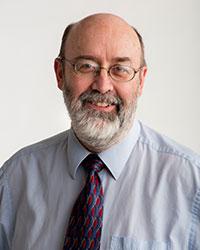
Biography:
Carl V Hamby has completed his PhD from the University of Missouri-Columbia and conducted his Post-doctoral studies at the New York Medical College School of Medicine, USA. He is an Associate Professor in the Department of Microbiology and Immunology at New York Medical College and served as Graduate Program Director in the department from 1989-2000. He is a Member of the American Association for Cancer Research and has published more than 30 papers in peer-reviewed journals. He has been a Principal Investigator on NIH and private research foundation grants and is an ad hoc Reviewer for well-respected international journals.
Abstract:
We present a new paradigm that describes how naturally-grown, harmless micro-organisms in the diet can interact with the oral mucosal immune system to enhance its ability to ward off viral infections. This paradigm has evolved from two key observations: (1) Bacteria or yeast grown at natural rates retain miRNA that are released when encountering stressful environments, e.g., saliva, and (2) Highly stressed animals fed bacteria with a high content of releasable miRNAs are significantly more resistant to infections and toxicants. Our working hypothesis is that the release of miRNA is an adaptive response of bacteria to stressful environmental conditions, e.g. saliva, which the oral mucosal immune systems of animals have learned to recognize and respond to through co-evolution. We have characterized miRNA released from Lactobacillus casei by Next Generation Sequencing and have shown that they are derived from a limited set of genomic loci and stimulate the release of low levels of inflammatory cytokines from peripheral blood mononuclear cells while preventing the release of high levels associated with chronic inflammatory diseases. In vivo experiments in farm animals showed that feeding miRNA-releasing bacteria (not commercial probiotics) prior to exposure to pathogens or stressors significantly reduced animal morbidity and mortality and maintained weight gain. Feeding or injecting mice with miRNAs protected them from the lethality of a subsequent injection of LPS. Supplementing human and animal diets with generally regarded as safe miRNA-releasing bacteria may activate protective innate immune responses resulting in overall health benefits for populations under physical or parasitic stress.
Sandra M Cardona
The University of Texas at San Antonio, USA
Title: Dissecting the role of fractalkine receptor during experimental autoimmune encephalomyelitis: New approach utilizing a humanized animal model

Biography:
Sandra M Cardona is an Assistant Professor of Research in the Department of Biology at the University of Texas at San Antonio. Her career in neurodegeneration started at the Cleveland Clinic studying the biology of the CX3CR1 receptor in microglia during models of systemic inflammation and Parkinson disease. After receiving her PhD in Cellular and Molecular Genetics in 2006 at Kent State University (Ohio), she continued her Post-doctoral training at The University of Texas at San Antonio where she developed a new autoimmunity model of type-1 diabetes aimed to investigate the role of CX3CR1 receptor during diabetic retinopathy. Currently, she is characterizing humanized mice expressing the human CX3CR1 variant receptor in neuroinflammatory models of multiple sclerosis and diabetes and interested in the role of CX3CR1 in the differentiation and biology of astrocytes. She is author of 12 scientific contributions and Member of ASN, SfN and AHA.
Abstract:
Fractalkine is a transmembrane chemokine expressed by neurons and peripheral endothelial cells, which acts both as an adhesion molecule and as a soluble chemoattractant upon proteolytic cleavage. In the CNS, fractalkine functions by signaling through its unique receptor, CX3CR1 expressed by microglia. Fractalkine/CX3CR1 signaling regulates microglia neurotoxicity in models of neurodegeneration. During experimental autoimmune encephalomyelitis (EAE), CX3CR1 deficiency confers exacerbated disease characterized by severe inflammation and neuropathology. Among the CX3CR1 human polymorphisms, the CX3CR1I249/M280 variant is present in ~20% of the population and exhibits reduced adhesion for fractalkine conferring defective signaling. However, the role of CX3CR1, microglia function and its effect on neuronal damage during multiple sclerosis remains unsolved. The aim of this study is to assess the effect of weaker signaling through the human CX3CR1I249/M280 receptor on EAE disease, axonal damage and expression of ciliary neurotropic factor (CNTF). We hypothesize that dysregulated microglial responses in absence of CX3CR1 signaling enhance neuronal/axonal damage via down-regulation of CNTF, a key survival factor for neurons and oligodendrocytes. We have generated an animal model by inserting the CX3CR1I249/M280 human variant into the mouse CX3CR1 locus. Active EAE was induced in humanized mice via MOG(35-55) peptide immunization. Our results show an exacerbated EAE phenotype in mice expressing the human CX3CR1I249/M280 receptor, characterized by accelerated disease onset and higher maximum EAE score in comparison to WT mice. These results correlated with severe CNS inflammation, microglia activation and increased demyelination in the cerebellum, a similar phenotype observed in CX3CR1-deficient mice. Interestingly, flow cytometry data showed slight down-regulation of MHC-II and CD68 activation markers in humanized mice, suggesting an alteration in microglia function induced by defective CX3CR1 signaling. Our results provide instrumental validation of defective function of the CX3CR1I249/M280 human variant and the foundation to broaden the understanding of microglia dysfunction during neuroinflammation.
Yu-Kyeong Hwang
Cell Therapy Research Center, Green Cross Lab Cell Corp., South Korea
Title: Ex vivo-expanded allogeneic NK cells for treatment of refractory and recurrent lymphoma and solid tumors

Biography:
Yu Kyeong Hwang has worked in pharmaceutical company driven research institute for more than 25 years. Her main interest is immune activation by antigen stimulation, many of candidate peptides and DNA constructs were listed in patents. Based on long term experience of cellular immunology in T cell area, since 2014, she is a Director of Cell Therapy Research Center in Green Cross LabCell (GCLC) Corp. By developing NK cell therapeutics, she controlled all process from discovery to clinical trials of ex vivo expanded allogeneic NK cell which was the world’s first clinical trial. In the clinical trial phase I, she discovered the mechanism of allogeneic NK cell after infusion into patients. Currently this NK cell program goes on phase IIa against HCC. Another couple of clinical trials are preparing IND submission in Korea and US.
Abstract:
Allogeneic NK cells have been used for their activity for hematologic cancer by hematopoietic stem cell transplantation. During the last decades, anti-cancer activity of ex vivo expanded NK cells were demonstrated in several studies, both in vitro and in vivo. Previously, ex vivo expanded allogeneic NK cells (MG4101) from healthy unrelated donor showed potent anti-tumor activity with tolerable toxicity profiles in several xenograft models. From healthy donor’s peripheral blood mononuclear cells (PBMCs), NK cells expanded under good manufacturing practice (GMP) conditions. NK cells selectively killed cancer cells without demonstrating cytotoxicity against allogeneic non-tumor cells in co-culture assays, and show the anti-tumor activity in various cancer model including lymphoma, ovarian cancer, hepatocellular carcinoma, neuroblastoma and glioblastoma. Phase I clinical trial had been conducted in 18-advanced and refractory cancer patients with various solid tumor and lymphoma by dose-escalating infusing. No adverse effects were reported after, and changes of immune cell population and cytokine/chemokine levels were shown by NK cell infusion. Therefore, allogeneic NK cell treatment without T cell contamination is feasible for cancer patients, and good clinical outcome is expected if it is used with adequate preconditioning regimen. For more additive efficacies, two more clinical trials have been conducted in patient’s solid tumor after HSCT and in HCC patients after curative resection. Both study showed its safety and delayed progress free survival (PFS) and recurrent free survival (TTP), respectively. Based on this NK cell manufacturing process, new genetically modifying technology like chimeric antigen receptor (CAR) technology can be emerged. NK cell is one of option to solve the problem in adverse effect in CAR-T therapy. In cooperation with many of advanced technology, NK cell therapy can be a new modality for the cancer treatment as an off-the-shelf product.
Khadija Rafiq
Thomas Jefferson University, USA
Title: Down regulation of allograft inflammatory factor-1 prevents B cell infiltration to cardiac tissue during the development of type 1 diabetes

Biography:
Khadija Rafiq has her expertise in immunology and cellular biology. Over the past several years she has been investigating how the immune system affects cardiac myocyte growth and cardiac function with a focus on signaling molecules that are activated by inflammatory proteases. Her research interest focuses on elucidating the role of inflammatory serine proteases in the development of diabetic cardiomyopathy. The goals of her research are to identify novel signaling mechanisms that control cardiac cell growth and apoptosis.
Abstract:
Diabetes mellitus (DM) often causes chronic inflammation, hypertrophy, apoptosis and fibrosis in the heart and subsequently leads to myocardial remodeling, deteriorated cardiac function and heart failure. However, the etiology of the cardiac disease is unknown. Therefore, we assessed the gene expression in diabetic and nondiabetic groups of mouse left ventricular hearts using Affymetrix microarray analysis. Of the 517 inflammatory genes altered in the diabetic hearts, 97 and 61 at 4 weeks and 8 weeks respectively were up- or down-regulated at fold change >1.3 with P<0.05 vs. control, 23 genes from each time point were identified as B cell inflammatory genes responsible for humoral immunity, one of the top of these genes is allograft inflammatory factor-1 (AIF-1) which is associated with B cell function during inflammatory responses. Real–time reverse transcriptase-polymerase chain reaction confirmed the Affymetrix data. CD19 B cell marker and AIF-1 were both downregulated in diabetic hearts at 4W and 8W as compared to control. Interestingly, we showed for the first time that AIF-1 is responsible for B cell migration to the myocytes. This study suggests that diabetes attenuates AIF-1 expression, and this, in turn, prevents B cell migration that may lead to an increase of inflammation in the heart.
Mariusz Z Ratajczak
University of Louisville, USA
Title: Innate immunity as a pivotal player in mobilization of hematopoietic stem cells from bone marrow into peripheral blood
Biography:
Mariusz Z Ratajczak is a Professor of Medicine, the Henry M and Stella M Hoenig Endowed Chair in Cancer Biology and the Director of the Developmental Biology Research Program at the University of Louisville's, James Graham Brown Cancer Center, USA. He is an internationally known specialist in the field of adult stem cell biology. He is also known for his work on novel mechanisms of mobilization and homing of stem cells, biological role of extracellular microvesicles and molecular mechanisms of cancer metastasis. Among his prestigious awards are the 2014 Karl Landsteiner Life Achievement Award from the German Society of Transfusion Medicine and Immunohematotherapy and the 2008 Cancer Researcher of the Year award. He has published numerous books and more than 450 peer-reviewed publications and is a frequent speaker at conferences worldwide. He is a Visiting Professor at Kansai University in Osaka, Japan and Fudan University in China.
Abstract:
In steady state conditions low number of HSPCs always circulates in peripheral blood (PB) and lymph and undergoes a circadian rhythm in their PB circulation, with the peak occurring early in the morning and the nadir at night. The number of circulating HSPCs increases in PB in response to (1) systemic or local inflammation, (2) strenuous exercise, (3) hypoxia and (4) tissue/organ injuries. Moreover, in clinical settings, administration of some agents may induce forced egress of HSPCs into PB and increase their number in PB up to 100 fold in a process known as pharmacological mobilization. Such drugs include cytokine granulocyte colony stimulating factor (G-CSF) and the small molecular CXCR4 antagonist AMD3100; known as Plerixafor. Pharmacological mobilization is exploited as a means to obtain HSPCs for hematopoietic transplantations. Our previous research demonstrated that mobilization of HSPCs is a part of innate immunity response. This evolutionary ancient process is orchestrated by granulocytes and monocytes that trigger activation of complement cascade and collateral also coagulation cascade. Initiation of complement cascade activation and subsequently activation of coagulation cascade occurs in mannan binding-lectin (MBL) complement activation pathway dependent-manner. Mannan binding lectin activates subsequently MBL-associated serine proteases (MASP-1 and MASP-2) that cleave third complement component C3 and prothrombin. Cleavage of C3 leads to formation of classical C5 convertase and cleavage of prothrombin generates thrombin that possesses C5-like convertase activity. Finally, both C5 convertases cleave fifth complement cascade protein C5 and activate distal part of complement cascade that is crucial for egress of HSCPs from BM niches into PB. Mobilization of HSPCs as we recently learned is negatively regulated by heme-oxygenase-1 (HO-1) and inducible nitric oxide synthetase (iNOS). Therefore, inhibition of these enzymes by small molecular inhibitors may enhance mobilization process, which is an important clinical implication for patients that are poor mobilizers.
Masoud Edalati
Isfahan University of Medical Sciences, Iran
Title: Prevalence of autoantibodies in patients with multiple sclerosis in Isfahan province of Iran
Biography:
Masoud Edalati has completed his education in Medicine in 1999 and then joined specialty training as a Resident in Clinical and Anatomical Pathology and completed Residency in 2005. His research interest is in clinical immunology, hematopathology and also medical microbiology. He has been serving as a Lab Director since 2005.
Abstract:
Statement of the Problem: Multiple sclerosis (M.S) is a chronic, immune-mediated, relapsing-remitting disorder affecting young adults, which its pathogenesis is still largely unknown. Multiple sclerosis is the commonest cause of neurological disability in young adults. Chronic autoimmune disease like SLE can be mistaken for M.S and should be considered during clinical practice.
Objectives: The purpose of the present study was to determine the prevalence of autoantibodies in patients clinically and radiologically diagnosed with M.S in Isfahan province of Iran.
Methodology & Theoretical Orientation: From September 2015 to September 2016, 269 patients clinically diagnosed with M.S referred by neurologists to Milad Medical Diagnostic Lab to be evaluated for common auto antibodies. Autoantibodies were detected through Elisa and immunofluorescence (I.F) method.
Results: The serum of 10 (3.7%) out of 269 patients clinically diagnosed with M.S disease revealed ANA reactivity followed by 15 (5.57%) showing anti-MOG (anti-myelin oligodendrocyte glycoprotein) and 1 (0.37%) Aquaporin-4 antibodies (NMO-IgG/neuromyelitis optica-IgG) reactivity. The patients were negative for c-ANCA, p-ANCA and APL (anti-phospholipid syndrome) antibodies. The most common ANA immunofluorescence patterns for these patients were homogenous (diffuse 50 %) followed by speckled (40%) and centromere (10%) patterns.
Conclusion & Significance: When assessing patients suspected of having M.S, clinicians should consider immune-mediated disease like SLE, APS, vasculitis and other autoimmune disease, especially if the patient show atypical features for M.S.
Ivon T C Novak
National University of Cordoba, Argentina
Title: What about neutrophils and costimulatory molecules?
Biography:
Ivon T C Novak studied Biology and performed a PhD thesis at Faculty of Exact, Physical and Natural Sciences of the National University of Cordoba, Argentina, in 2003. She is currently a full-time Adjunt Professor of Department of Cell Biology, Histology and Embryology at Faculty of Medical Sciences, National University of Cordoba and Director of Elective Module of Basic Immunology at Faculty of Medical Sciences, National University of Cordoba. She is Magister in University Teaching, Regional Cordoba Faculty, and National Technological University. Her main research interest has been on Immunology, Cell Biology and University Education.
Abstract:
Human neutrophils not only limit their function to phagocytosis, production of reactive oxygen species and generation of neutrophil extracellular traps (NETs), but also modulate the immune response according to the microenvironment and the cell-cell interactions. As it is known, NETs are formed by chromatin and granular proteins which after stimulation are released to the extracellular environment. NETs have not only been involved as defence mechanisms, but they have also been linked to tissue damage, thrombosis, cancer immunoediting and autoimmunity. Poly morphonuclear neutrophils (PMNs) activated in vitro may express molecules normally associated with antigen presenting cells (APCs). T cell activation initiates with a first signal, the interaction of the antigenic peptide/major histocompatibility complex with the TCR, and a second signal, the costimulatory signal. Costimulatory molecules B7-1 (CD80) and B7-2 (CD86), which can be performed in neutrophilic granules, can be expressed in the surface under certain stimuli. May NETs contain costimulatory molecules? Recently we found CD80 and CD86 colocalized in NETs in autologous leukocytes cultures, after lipopolysaccharide (LPS) or ovalbumin (OVA) stimulation. The costimulation can be stimulatory or inhibitory; this depends on the receptor. The B7-1/B7-2:CD28/CTLA-4 pathway is known to be critical for immune response initiation and regulation. The presence of costimulatory molecules in NETs would let them influence the cell environment and would allow PMNs to exert function as APCs and modulatory functions of various subpopulations of T cells. Future research regarding the impact of NETs on the role of T cells must be performed. The variability of neutrophil functions according to its environment, physiological or pathological condition, and the expression of different surface markers have allowed to characterize different phenotypes of neutrophils, but there are heterogenea descriptions in literature, because parameters, methods, specie, tissue and biomarkers, are different. Neutrophils are very interesting cells implicated in innate and adaptive immunity.
Ruihua Chen
Bristol Myers Squibb, USA
Title: A high throughput platform for the identification of inhibitors of integrin-mediated TGFβ activation
Biography:
Ruihua Chen has worked in the pharmaceutical and biotechnology industry for 18 years in the capacities of discovery and translational research. From the diverse roles he has played various therapeutic areas he has worked on, he has come to a sense that drug targets can be shared in many diseases. He is currently working in the areas of immunology and oncology, and one of his passions is to maximize the values of compounds by finding uses outside these areas.
Abstract:
Integrins and Transforming Growth Factor beta (TGFβ) regulate multiple cellular processes including adhesion, migration, proliferation, extracellular matrix (ECM) homeostasis and epithelial-mesenchymal transition. Integrin–mediated TGFβ activation has been indicated in pathological conditions including fibrogenesis and immune suppression. Macrophages are a major cellular source of TGFβ. Alteration of macrophage phenotypes and aberrant activation of TGFβ lead to several fibrotic and immune diseases therefore inhibitors of TGF-β activation have potential values in multiple therapeutic areas. We have developed de novo Homogenous Time Resolved Fluorescence 1536-well binding assays using multiple integrins to identify inhibitors and to support mechanism of action studies. Further, we have developed a high throughput Detroit 562 cell co-culture assay to measure TGFβ activation. In conjunction with these studies, we have also utilized a macrophage polarization model and developed cytokine and mRNA profiling assays to explore potential pharmacodynamic and/or disease biomarkers. These studies offer a novel platform to identify novel inhibitors of TGF beta signaling associated with specific subsets of integrins.
Manal Mohamed Saber
Minia University, Egypt
Title: Therapeutic impact of EMAP II and CD13 expression in colorectal cancer
Biography:
Manal Saber has completed her PhD from Nottingham University. She is an Associate Professor of Clinical Pathology, Minia University, Egypt. She has published papers in peer reviewed journals and has been serving as an editorial board member of others.
Abstract:
Statement of the Problem: Colorectal cancer (CRC) is the third most commonly diagnosed cancer and a major cause of cancer mortality in the world. Despite advances in CRC treatment, a greater proportion of patients, highlighting the need for new immunotherapy. Endothelial monocyte-activating polypeptide-II (EMAP-II) is a multifunctional cytokine with pro-inflammatory properties. Aminopeptidase N (CD13) is a zinc-binding protease that has a role in cancerogenesis. It is proposed that both EMAP II and CD13 are involved in tumor progression and metastasis. The purpose of this study is to develop a novel immunotherapy expressing anti-EMAP and anti-CD13 antibodies in CRC.
Methodology & Theoretical Orientation: Expression of both EMAP II and CD13 was studied in CRC patients by immunohistochemistry, flow cytometry and ELISA. The antitumour effect of the anti-EMAP II and anti-CD13 antibodies was verified by therapeutic animal experiments in vivo.
Findings: There was a positive correlation between CD13 and EMAP II expression in CRC with accordingly decline in CD4 and CD8 cells. Coculture of peripheral T cells with recombinant EMAP II caused a significant increase in CD13+ T cells in comparison to control (P<0.001). In an animal model, an administration of anti-EMAP II and anti-CD13 antibodies resulted in extension of the survival of the mice compared to the untreated group. Furthermore, novel immunotherapy decreased CD13+T cells and increased CD4-positive T cells, CD8-positive T cells, NK cells. Furthermore, novel immunotherapy decreased the tumour-induced apoptosis of T cells.
Conclusion & Significance: This study has demonstrated a novel promising tumour immunotherapy for CRC.
Latif O Mohammed
University of Sulaimania, Iraq
Title: The role of TNF-ô€„, IL-1ô€… and IL-10 gene polymorphisms in resistance to toxoplasmosis infection among aborted women in Sulaimania city
Biography:
Abstract:
This study is achieved to investigate or observe the association between the polymorphisms of three mentioned interleukin and toxoplasmosis among aborted women in Sulaimania province. Toxoplasma gondii is one of an obligate intracellular parasite that causes toxoplasmosis. Cytokines have a role in its pathogenesis. The single nucleotide polymorphisms (SNPs) of each cytokine have been suggested to have role in etiologic. So, the aim of the presented study was to investigate the association between the SNPs of mentioned interleukins and toxoplasmosis in 50 toxoplasmosis –aborted women were admitted to maternity teaching hospital in Sulaimania governorate during the period Jan. 2017 – March 2017 to finish their pregnancy. SNPs were ascertained by PCR-SSP (Polymerase chain reaction-sequence specific priming) method in addition, 40 apparently healthy women (University staff and health staff) as control. Both Latex agglutination test and Enzyme linked immunosorbent assay for IgG and IgM observed that 34% of case were positive for IgG and IgM anti- Toxoplasma antibodies. This study showed that the single nucleated polymorphisms (SNPs) of TNF-α, IL-10 and IL-1β demonstrated no significant positive or negative association with toxoplasmosis in the samples of aborted women in Sulaimania province/north of Iraq.
Seung Chung
University of Illinois at Chicago, USA
Title: Complement C5a in nerve regeneration under inß ammatory injury

Biography:
Seung Chung received his PhD in Neuroscience in 2008 from University of Calgary Cummings School of Medicine, Canada and currently is an Assistant Professor at the University of Illinois at Chicago College of Dentistry. His lab focuses on determining the role of the complement system in nerve regeneration of human carious teeth and investigating the molecular mechanisms of the p38 mitogen activated protein kinase and chromatin-remodelling factor Brg1 in nerve myelination and remyelination.
Abstract:
Tooth nerve damage from bacterial invasion (decay) or trauma is very common. Proper nerve regeneration is crucial for maintaining tooth viability as shown by previous studies of nerve denervation using rodent models that resulted in severe defects on tooth structure and function. These defects include significantly reduced survival and regeneration rate of exposed dental pulp tissue and severe morphological defects such as dento-alveolar ankyloses. Although dental nerve appears to have a critical importance in maintaining tooth morphology and viability, very little is known about initial mechanisms that regulate dental nerve regeneration especially beneath a caries injury site. To date, no investigation has systematically explored the effect of the complement system, which is one of the first components of innate immunity and inflammation, on dental nerve regeneration and its interaction with pulp fibroblasts under caries. Complement activation on human pulp fibroblasts has been suggested to provide a link between pulp inflammation and its regeneration capacity. Of central interest, we demonstrated for the first time that nerve outgrowth is controlled by local elevated expression of discrete nerve growth factors (neurotrophins) released from nearby pulp fibroblasts upon carious injury through interaction with the complement system. Our results demonstrate that complement component C5a receptors (C5aR) are ectopically expressed in human pulp fibroblasts both in vitro and in vivo shortly after carious injury. We provide direct evidence of C5aR`s critical role in the expression and secretion of brain-derived neurotropic factor (BDNF) by pulp fibroblasts leading to a significant neurite outgrowth enhancement toward the injured site. Surprisingly, we further confirmed the negative regulation of BDNF-secretion by C5L2, a previously defined ‘non-functional C5a receptor’, in biological regulation of C5a signaling. p38a mitogen activated protein kinase (MAPK) is well established as a mediator of inflammatory responses and previously suggested in downstream regulation by C5aR in other systems. Indeed, our initial assays demonstrate that p38 MAPK plays a key role in the modulation of neurotrophin secretions and this is C5a signalling dependent linking this key molecule to the mechanisms of action of C5a. Our study provdes molecular understanding of initial steps of dentin-pulp regeneration by linking neurite outgrowth to pulp fibroblast function through complement system activation. These studies will provide the basis for potential therapeutic interventions of dentin repair and vital tooth preservation.
Maurilio Toscanode Lucena
Universidade Federal de Pernambuco, Brasil
Title: Buschke-Loewenstein Tumor: a case series from Brazil
Biography:
Abstract:
Buschke-Loewenstein Tumor or giant condyloma acuminatum is a disease caused by a DNA virus, the self-inoculable human papilloma virus (HPV), being sexually transmitted. Histo-logically BLT is a benign tumor, but with malignant clinical behavior and a high propensityfor local recurrence and malignant degeneration. The clinical picture consists of the pres-ence of a cauliflower-like bulky condylomatous perianal mass with multiple fistulous tracts,which can cause great destruction of the anal canal, with invasion of adjacent tissues. Bleed-ing, foul odor, local pain and weight loss are also described. The diagnosis is establishedby biopsy that should exclude the presence of malignant transformation, which occurs in30–50% of cases. Associated with a biopsy, the hybridization test may be performed to diag-nose HPV infection, especially subtypes 6 and 11 that are commonly related. The treatmentof choice is radical surgical excision; however, those patients presenting with extensive fis-tulous lesions may require a temporary colostomy. Some authors advocate an abdominoper-ineal resection in cases of infiltration of the sphincter or rectum. This study was designed to evaluate the experience of the service of Coloproctology at a referral hospital in NortheasternBrazil with this rare entity, contributing to world literature in addressing this disease.
